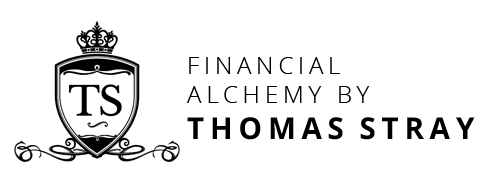As the CEO and Founder of Endemaj Funds LLC, a Dubai-based multifaceted family office with a strong focus on Fintech, I’ve spent years navigating the world of finance and technological innovation. Throughout my journey, I have witnessed various crises and market fluctuations, but the recent turmoil in the US regional banking sector, as reported by the Financial Times, has truly piqued my interest.
As US regional banks experience steep stock declines, the warning bells are ringing louder than ever, leading prominent activist investor Nelson Peltz to urge Washington to step up and help curb the crisis. The series of events, from the collapse of Silicon Valley Bank and Signature Bank to the FDIC’s seizure of California lender First Republic, are cause for concern. Amidst the chaos, the pressing question remains: how can the government and the banking industry join forces to navigate these choppy waters and prevent further financial devastation?
In this blog post, I will delve into the complexities of the unfolding regional bank crisis and provide a personal, opinionated analysis of potential measures to strengthen the sector. Join me as we examine the complexities of this financial conundrum and explore the need for Washington to take a prompt and comprehensive intervention.

the fed's rate hikes and their effect on uS banking
As we venture further into this whirlwind of a banking crisis, let’s take a closer look at the key factors contributing to the difficult situation faced by US regional banks. The Federal Reserve’s aggressive rate hikes have caught many lenders off guard, leading to an increase in deposit costs and consequently, the erosion of profitability. Furthermore, banks with a high proportion of deposits above the FDIC’s $250,000 guarantee limit find themselves in an especially precarious position, as depositors are incentivized to withdraw their unprotected funds.
The domino effect has been undeniable, with the collapse of Silicon Valley Bank and Signature Bank in March signaling the start of a tumultuous journey. California-based PacWest has joined the fray, seeking a financial lifeline and engaging in talks with potential partners and investors. Similarly, TD Bank scrapped its planned $13 billion acquisition of Memphis-based First Horizon due to regulatory uncertainty, causing its shares to plummet by 33.2%.
With the KBW Regional Bank Index down more than 30% this year, it’s clear that the regional banking sector is in dire need of a lifeline. This is where activist investor Nelson Peltz’s call to action comes into play. Peltz proposes an increase in the deposit insurance limit, with wealthy account holders paying a small insurance premium to the federal insurance fund to protect balances exceeding $250,000. This would, in theory, halt the outflow of deposits from small regional and community banks.
Peltz’s suggestion is not without merit. By increasing the deposit insurance limit, the government could provide much-needed stability to the banking sector and instill confidence in depositors. However, there may need to be more than this move to stem the crisis. A more comprehensive approach involving regulatory and industry-wide measures is essential to tackle the underlying issues and mitigate the risk of future collapses.

One potential avenue is for banks to re-evaluate their risk management strategies and ensure they have robust systems in place to withstand fluctuations in interest rates and other market forces. Additionally, enhanced transparency and communication between banks and their customers could help assuage concerns about the safety of deposits and the overall financial health of institutions.
On the regulatory front, the FDIC has already suggested increasing deposit insurance to cover business accounts, proposing a new limit of $2.5 million, which would encompass most small and medium-sized companies. While this would require congressional approval, it’s a promising step towards shoring up confidence in the banking sector and protecting the interests of businesses.
The government could also look into the idea of implementing tailored assistance programs for the local banks that have been hardest hit by the crisis. This could involve short-term capital injections or assistance with mergers and acquisitions to help consolidate and strengthen the industry.
The recent events surrounding Goldman Sachs’ dual role with Silicon Valley Bank – as both a buyer of $21 billion in securities and an adviser on a failed equity raise for the bank – have also shed light on the need for greater oversight and accountability within the industry. Regulatory bodies should strive to ensure that financial institutions maintain strict ethical standards and avoid conflicts of interest that could exacerbate an already volatile situation.
Final Thoughts
The current banking crisis is a stark reminder of the delicate nature of the financial industry and the importance of proactive, decisive action in the face of uncertainty. It shows the need for businesses to adapt to the current economic climate. Reflecting on my own experience in the world of Fintech and financial innovation, I recognize the necessity of collaboration and adaptability to weather the storms that inevitably arise.
While the road ahead may be fraught with challenges, I firmly believe that with a combination of strong intervention from Washington, prudent risk management, and industry-wide cooperation, we can navigate through these turbulent times and emerge stronger than ever. The future of the US regional banking sector hangs in the balance, and the time for bold, innovative solutions is now.





